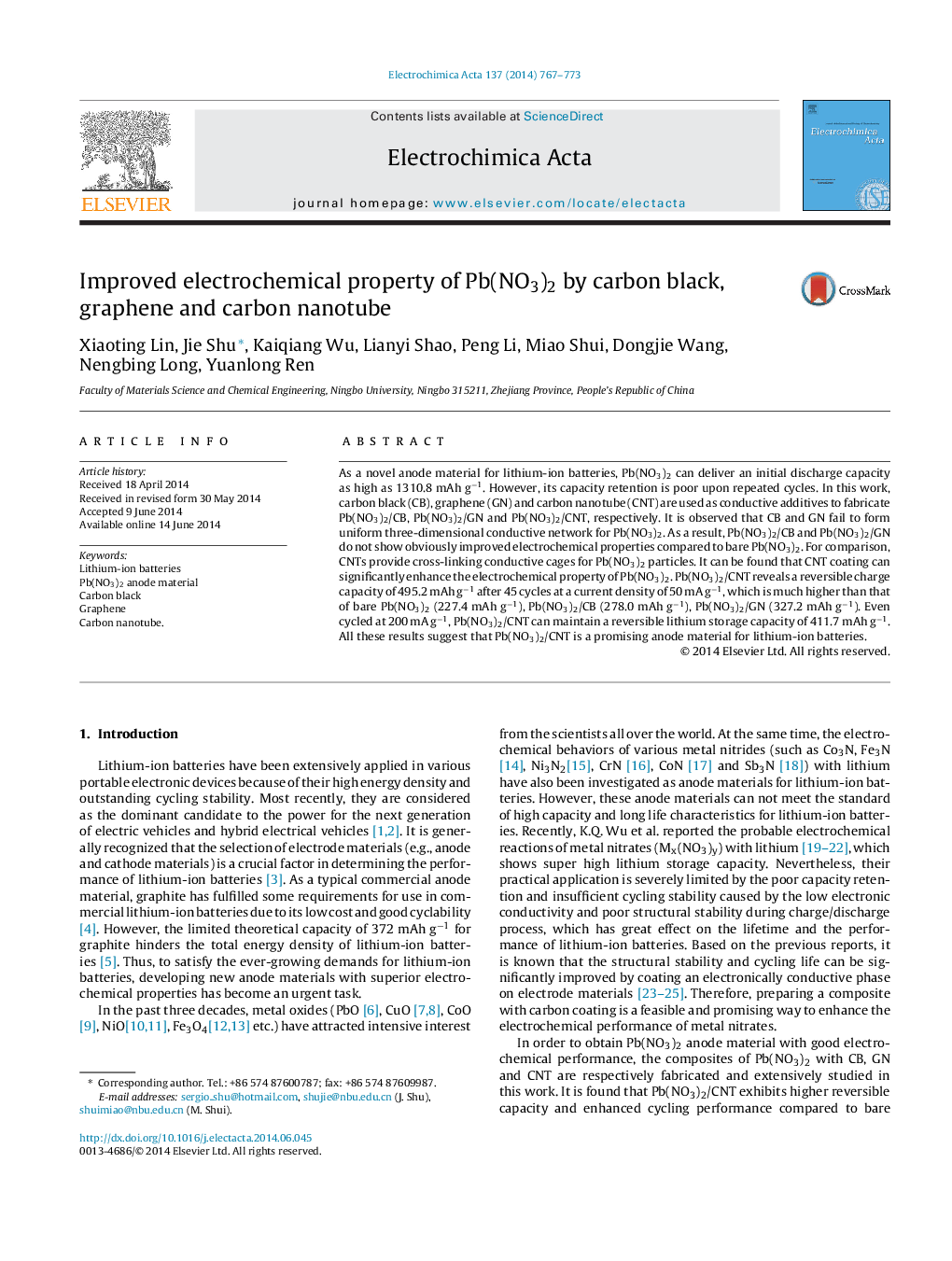| Article ID | Journal | Published Year | Pages | File Type |
|---|---|---|---|---|
| 185635 | Electrochimica Acta | 2014 | 7 Pages |
•Pb(NO3)2/CB, Pb(NO3)2/GN and Pb(NO3)2/CNT are prepared by a solution route.•The electrochemical property of Pb(NO3)2 is improved by CB, GN and CNT.•Pb(NO3)2/CNT shows the most outstanding cycling and rate properties.•Pb(NO3)2/CNT reveals a reversible capacity of 495.2 mAh g−1 after 45 cycles.
As a novel anode material for lithium-ion batteries, Pb(NO3)2 can deliver an initial discharge capacity as high as 1310.8 mAh g−1. However, its capacity retention is poor upon repeated cycles. In this work, carbon black (CB), graphene (GN) and carbon nanotube (CNT) are used as conductive additives to fabricate Pb(NO3)2/CB, Pb(NO3)2/GN and Pb(NO3)2/CNT, respectively. It is observed that CB and GN fail to form uniform three-dimensional conductive network for Pb(NO3)2. As a result, Pb(NO3)2/CB and Pb(NO3)2/GN do not show obviously improved electrochemical properties compared to bare Pb(NO3)2. For comparison, CNTs provide cross-linking conductive cages for Pb(NO3)2 particles. It can be found that CNT coating can significantly enhance the electrochemical property of Pb(NO3)2. Pb(NO3)2/CNT reveals a reversible charge capacity of 495.2 mAh g−1 after 45 cycles at a current density of 50 mA g−1, which is much higher than that of bare Pb(NO3)2 (227.4 mAh g−1), Pb(NO3)2/CB (278.0 mAh g−1), Pb(NO3)2/GN (327.2 mAh g−1). Even cycled at 200 mA g−1, Pb(NO3)2/CNT can maintain a reversible lithium storage capacity of 411.7 mAh g−1. All these results suggest that Pb(NO3)2/CNT is a promising anode material for lithium-ion batteries.
Graphical abstractFigure optionsDownload full-size imageDownload as PowerPoint slide
